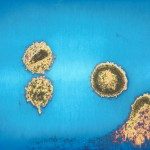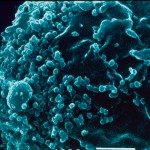Lien vers Pubmed [PMID] – 23422261
Curr Opin HIV AIDS 2013 May;8(3):196-203
PURPOSE OF REVIEW: Some individuals are able to control HIV infection (either viral replication or chronic immune activation) in the absence of therapy. We will consider recent insights into the mechanisms underlying control in these patients and how this has already encouraged the search for therapeutic approaches to induce a similar HIV functional cure in other patients.
RECENT FINDINGS: Spontaneous reduction of HIV viremia to undetectable levels as observed in a few HIV-infected patients is associated with an efficient HIV-specific CD8 T-cell response, the characteristics of which are now better understood. However, maintenance of such control may involve alternative mechanisms. In particular, the presence of a very small viral reservoir seems necessary, although not sufficient, to ensure HIV control in the long term. Approaches designed to limit the early establishment of these reservoirs, to eliminate infected cells, or to avoid replenishment of the reservoirs have led to HIV remission in the absence of therapy in a few cases. Alternatively, other rare patients seem to deal with HIV infection by controlling immune activation despite high levels of viremia like the natural African monkey hosts do with SIV. These observations suggest that regulation of immune activation should be considered as a serious complement to conventional therapies targeting the virus itself.
SUMMARY: A better understanding of the mechanisms underlying control of HIV infection or disease in some patients has already led to successful approaches in certain individuals. However, much work is still needed to generalize these results to the global population of HIV-infected patients.




